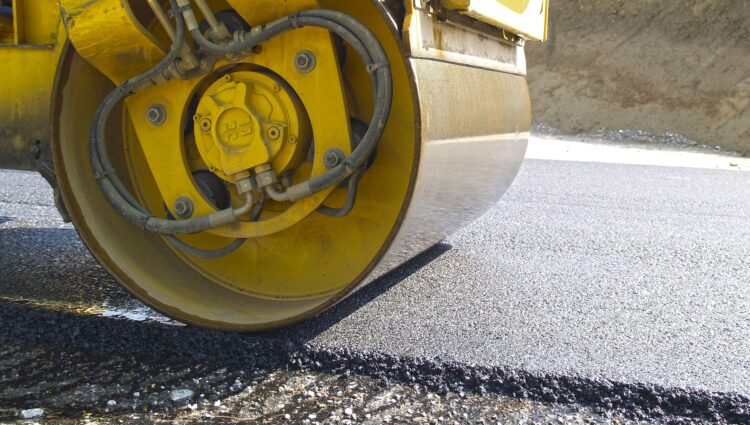
July 19. By Dave Vieser. When Deputy Town Manager Wayne Herron recently disclosed that the DOT’s construction and widening of West Catawba Avenue—a crucial project for the west half of Cornelius—would not even begin until 2025, questions were raised as to whether local municipalities have any alternate ability to fund such projects, especially in view of the delays often experienced with NCDOT projects, both from a scheduling and funding perspective.
Road funding has also become more critical than ever, as more and more projects are needed to handle increased traffic volume, while state law prevents municipalities from charging impact fees to developers.
Transportation funding
Public roads are 95 percent paid for by federal and state funds, primarily gas taxes, passed through and coordinated by state DOT’s. Federal funding is generally approved by Congress every five years. Some recent federal funding included the 2015 Fixing America Surface Transportation Act, and the 2021 surface transportation bill currently being debated.
Project priorities are identified by groups such as the Charlotte Regional Planning Transportation Organization (CRPTO).

Miltich
Cornelius Commissioner Mike Miltich is the current chair of CRPTO. “Following passage of the state’s Strategic Transportation Investment (STI) Act in 2013, NC transportation funding allocation is now data driven,” Miltich said. “This puts us in a better position to protect Cornelius’ interests by ensuring our projects are properly scored, that the planning and funding allocation process is followed, and by blocking attempts to circumvent the process diverting our funding elsewhere.” However, the high cost of major projects such as widening West Catawba Avenue really limit funding options.
Road bonds
Voters can authorize municipalities to float bonds dedicated solely for road and transportation improvements. Cornelius has done this twice according to Deputy Town Manager Wayne Herron.
The town has issued all of the voter-approved road bonds from the 2013 bond referendum—totaling $11.1 million. A separate road bond referendum in 2018 approved by voters was for $24 million, Herron said. But one of the problems is that construction costs escalate rapidly. For example, the town initially planned to devote $5.8 million from the 2018 bond issue towards the West Catawba Widening. However, the estimated cost for that project mushroomed from $38.5 million in 2018 to over $50 million today.
While these bonds can be used for building smaller roads, such as Nannie Potts Lane, they cannot usually handle major projects such as Phase Two West Catawba widening.
As for the 2018 bond money, Herron said that the town has not yet issued any of the $24 million but “we do plan to issue a portion of these road bonds within the next 12 months.”
Neighboring Huntersville also implemented a bond issue In November 2012. A total of $20 million was designated for transportation projects. In February 2020, the Town sold $15.6 million in bonds for transportation projects. There are no remaining unsold bonds related to this referendum according to Finance Director Pattie McGinniss.
Some municipalities have found other ways to fund road projects:
Pennies for Progress
Pennies for Progress is the name of the York County Capital Projects Sales and Use Tax Programs. The Program was initiated by York County to provide residents with a safer and more efficient roadway system. The projects were funded by an increase in the local sales tax, which is currently 7 percent. (It’s 7.25 percent in Mecklenburg County.) York County, with a population of approximately 274,000, was the first county in South Carolina to pass this type of sales tax to improve their road system.
Proposals for a similar type of program in Mecklenburg County and/or Cornelius, which would require state legislation and voter approval for the higher sales tax rate, have not been successful to date.
Bonus Allocation Funds
Sometimes extra funds will be provided by the state or NCDOT to fund local road projects in areas where major construction will inconvenience motorists. Such was the case with the I-77 toll lanes.
The four projects that were originally slated as bonus allocation projects are all slated to begin construction in the next year:
• US 21/Catawba dual roundabouts
• NC 115/Potts St./Davidson St. roundabout
• Torrence Chapel/West Catawba triple roundabouts
• Northcross Drive Extension
In Huntersville, the Town requested a swap of the bonus allocation funds for their Main Street project due to a delay in the NCDOT schedule.
The Cary Model
This option emerged when the Town of Cary wanted a road project completed sooner than NCDOT could do it—by several years. Consequently, Cary entered into an agreement with NCDOT enabling Cary to perform the project at their expense right away. The project remained on the list of projects to be funded by NCDOT which would eventually reimburse the town for their expenses.

Aneralla
Huntersville Mayor John Aneralla explained towns needed a healthy fund balance to take on that level of expense. “You can go ahead and build it but you’re not going to get reimbursed until the road construction was scheduled to be completed,” he said.
Sounds good, but when NCDOT had its cash flow problems last year, several municipalities asked about employing the Cary Model to keep their projects on schedule. NCDOT applied the brakes, stating they didn’t know when they could pay the municipalities back. The number of projects was also apparently more than NCDOT wanted to consider.
Bottom line
Despite the lack of viable funding options, the demand is great. “Bottom line is that North Carolina roads need increased funding and quickly,” Miltich said. “Our state representatives need to approve new and better funding sources to support the lagging infrastructure of the state and the region.”





